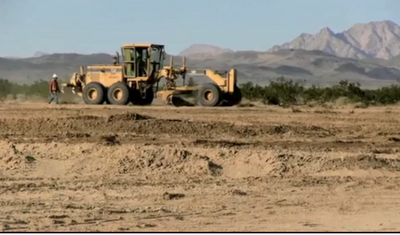Take Action to Save The Desert

Click here to sign the petition by Solar Done Right calling for a responsible renewable energy future. As this photo by Chris Clarke shows, energy companies have already begun to bulldoze ecologically intact desert wildlands to make way for massive solar facilities . Our clean energy future does not need to involve sacrificing more of our natural treasures. We have a long history of destroying wild landscapes to generate electricity. Oil spills killing marine life, natural gas wells fragmenting sagebrush habitat and spoiling our groundwater, and coal plants spewing emissions that warm our planet. We are rightfully looking to renewable energy sources as a better alternative, but we cannot afford to sacrifice more wildlands to energy. As of December, the Bureau of Land Management had received applications for wind and solar facilities on 1,659 square miles of public land in just California, and yet that would still not be enough to meet the State's energy n...






